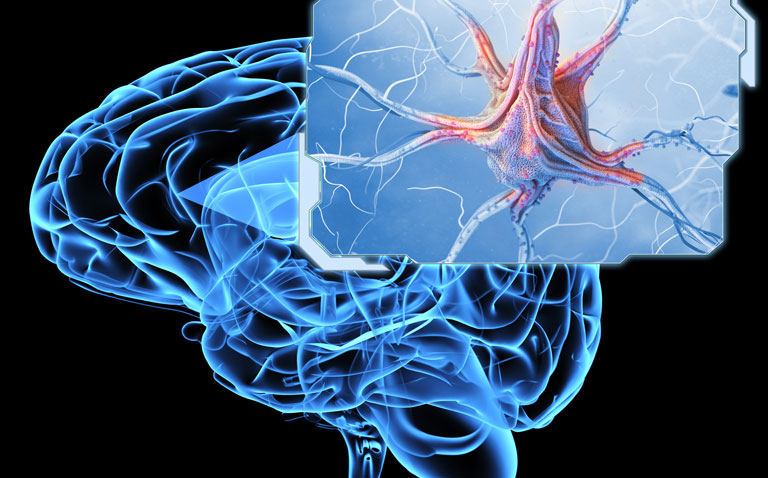It’s very well-evidenced that convulsive status epilepticus (SE) requires urgent treatment to reduce the risk of permanent harm to the patient.
Achieving seizure control within the first one to two hours is an independent predictor of patient outcomes, including significant disability and mortality.1
Using benzodiazepines as a first course of action is well established, and if given promptly and in sufficient doses will abort seizures in up to 70% of patients. However, best practice beyond this has been far less clear for treating this life-threatening condition.
That is, until the results of the Established Status epilepticus Treatment Trial (ESETT) trial were published this week in the New England Journal of Medicine – providing much needed results on what to do when first-line therapy fails.2
If benzodiazepines fail to work, the decision to administer a second drug needs to be taken within five to 10 minutes, with phenytoin being the traditional choice and the only drug licensed for use in SE. Newer alternatives, specifically valproate and levetiracetam have gained popularity, but until now not been rigorously evaluated in a clinical trial setting, leaving clinicians uncertain as to which drug to use and at what doses.
Our double blind randomised controlled trial in 384 patients showed that all three drugs are effective in stopping seizures in around half of patients that have not responded to benzodiazepines, sparing many patients from endotracheal intubation and intensive care unit stays. Each drug was found to be equally effective in stopping seizures, with no significant differences in terms of drug safety when comparing across outcomes including life-threatening hypotension, heart problems, seizure recurrence and death.
Cumulative trials in SE over the years now support an evidenced based sequence of treatment, to which the vast majority of patients will SE will respond. These started 20 years ago with the Veterans Affairs co-operative3 and Pre-Hospital Treatment of SE studies,4 through to the 2012 RAMPART study.5 This list now includes ESETT and two open paediatric studies also published this year, ConSEPT6 and EclipSE.7
Looking at the broader picture, I believe valproate and levetiracetam have other practical advantages making them preferable to phenytoin.
Phenytoin takes at least double the time (20 minutes or more) to administer, and can exacerbate seizures in some types of epilepsy, with multiple potential drug interactions in an already critically ill population often needing multiple medications. Life threatening hypotension and cardiac arrhythmias, which are already risks in SE, are also recognised side effects not seen with the other agents.
When it comes to maintenance therapy, phenytoin is rarely used as it has been superseded by newer agents with better tolerability profiles, including valproate and levetiracetam. Finally, of reports over five years to the UK National Patient Safety Agency,8 phenytoin was the only drug where loading dose errors were associated with fatalities.
The results from ESSET should give clinicians the confidence to use valproate or levetiracetam to treat SE using the high loading doses utilised in the study.
Our focus now must include ways to better prevent or treat the remaining refractory SE patients, and putting the evidence we do have into practice. A sub-study within ESETT also demonstrated frequent under-dosing with benzodiazepines,9 and in my own centre and elsewhere I know the same is often true of second line agents.
We need to trust the evidence we have, be braver with dosing and act quickly with the effective medications we have. If we follow guidance and take prompt action, we will all be better set to provide the best care and save lives.
References
- Crawshaw AA, Cock HR. Medical management of status epilepticus: Emergency room to intensive care unit. Seizure 2019;epub ahead of print doi: https://doi.org/10.1016/j.seizure.2019.10.006
- Kapur J, Elm JJ, Chamberlain JM, et al. Randomised trial of three anticonvulsant medications for status epilepticus. New England Journal of Medicine 2019 [published Online First: 28/11/2019]
- Treiman DM, Meyers PD, Walton NY, et al. A comparison of four treatments for generalized convulsive status epilepticus. Veterans Affairs Status Epilepticus Cooperative Study Group. New England Journal of Medicine 1998;339(12):792-98.
- Lowenstein DH, Alldredge BK, Gelb AM, et al. Results of a controlled trial of benzodiazepines for the treatment of status epilepticus in the prehospital setting. Epilepsia 1999;40:243-43.
- Silbergleit R, Durkalski V, Lowenstein D, et al. Intramuscular versus intravenous therapy for prehospital status epilepticus. New England Journal of Medicine 2012;366(7):591-600. doi: 10.1056/NEJMoa1107494 [published Online First: 2012/02/18]
- Dalziel SR, Borland ML, Furyk J, et al. Levetiracetam versus phenytoin for second-line treatment of convulsive status epilepticus in children (ConSEPT): an open-label, multicentre, randomised controlled trial. The Lancet 2019;393(10186):2135-45. doi: https://doi.org/10.1016/S0140-6736(19)30722-6
- Lyttle MD, Rainford NEA, Gamble C, et al. Levetiracetam versus phenytoin for second-line treatment of paediatric convulsive status epilepticus (EcLiPSE): a multicentre, open-label, randomised trial. The Lancet 2019;393(10186):2125-34. doi: https://doi.org/10.1016/S0140-6736(19)30724-X
- National Patient Safety Agency. Rapid Response Report NPSA/2010/RRR018. Preventing fatalities from medication loading doses. Rapid Response Reports NSPA. London, UK, 2010.
- Sathe AG, Tillman H, Coles LD, et al. Underdosing of Benzodiazepines in Patients With Status Epilepticus Enrolled in Established Status Epilepticus Treatment Trial. Academic Emergency Medicine 2019;26(8):940-43. doi: 10.1111/acem.13811
About the author
Hannah Cock is Professor of Epilepsy and Medical Education at St George’s, University of London, and a consultant neurologist in the Atkinson Morley Regional Epilepsy Network at St George’s University Hospitals NHS Foundation Trust. She has been involved in status epilepticus research for over 20 years, is now course director for medicine at St George’s, University of London, and the local Status Epilepticus lead.
Declaration
Prof Cock was a principal investigator on the ESETT study, funded by Grants U01NS073476, U01NS088034, U01NS088023, U01NS056975, U01NS059041, and R01NS099653 from the National Institute of Neurological Disorders and Stroke, USA. She also reports: personal fees from Sage Pharmaceuticals Ltd, from Eisai Europe Ltd, UCB Pharma Ltd, UK Epilepsy Nurse Specialist Association, Bial and Eisai outside the submitted work. Also non-financial support from Special Products Ltd, the International League Against Epilepsy Epilepsy Certification (education) Task Force, and the European Academy of Neurology.










